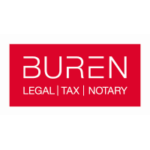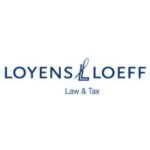-
What are the most common types of corporate business entity and what are the main structural differences between them?
The most common types of corporate business entities in Belgium are the “besloten vennootschap / société à responsabilité limitée” (BV/SRL) and the “naamloze vennootschap / société anonyme” (NV/SA). The main structural differences between these two are the following:
- while a BV/SRL has no stated share capital, it requires sufficient initial funds at the time of incorporation in light of the company’s anticipated activities. To incorporate a NV/SA, a minimum share capital of EUR 61,500 is required;
- in a BV/SRL, not only cash and property can be contributed, but also work (i.e. an undertaking to provide services to the BV/SRL). The contribution of work is possible in a NV/SA, but not in exchange of capital shares;
- the shares in a NV/SA are by default freely transferable, but the articles of association may restrict the free transferability, without having the possibility to fully abolish it. In a BV/SRL, if nothing is provided in the articles of association, a share transfer shall only be free between shareholders or certain family members of shareholders; for all other transfers, shareholder approval is required;
- a NV/SA can have a two-tier governance system while that is not an option for a BV/SRL; the articles of association may freely deviate from these rules;
- although in theory both NV/SA and BV/SRL can be listed companies, in practice only NV/SA are.
-
What are the current key topical legal issues, developments, trends and challenges in corporate governance in this jurisdiction?
The following topics are a selection of key interesting legal challenges, trends and developments in corporate governance in Belgium:
2.1. Directors’ liability towards their company’s co-contractor
On 1 January 2025, book 6 “Extra-contractual liability”of the Belgian Civil Code has entered into force. Book 6 of the Belgian Civil Code will have an impact on directors’ liability.
Under the previous regime, directors were nearly automatically protected against claims by their company’s co-contractor because they benefit from the “quasi-immunity of auxiliaries”.
Companies constantly rely on auxiliaries (such as directors, employees, or independent services providers) in the execution of their contracts. Such auxiliaries have enjoyed quasi-immunity against claims by their principal’s co-contractor as such co-contractor could not hold the auxiliary person liable for flawed performance of the contract, neither on a contractual basis (as there is no contract between the auxiliary person and the co-contractor) nor on an extra-contractual basis, the latter except in case of a criminal offence or in case of an extra-contractual fault (a violation of the standard of care) of the auxiliary person leading to damages other than damages purely due to the flawed performance of the contract.
Book 6 of the Belgian Civil Code abolished this (nearly) automatic protection for directors. As a result, a co-contractor of the company are now able to bring an extra-contractual liability claim against directors.
Parties can however request co-contractors to contractually waive extra-contractual claims against auxiliaries. Book 6 of the Civil Code allows auxiliaries to rely on protective measures agreed upon between the auxiliary and the principal against the co-contractor.
2.2. Liability cap for directors
The Belgian Code of Companies and Associations (BCCA) limits directors’ liability to some extent through the inclusion of a monetary cap on directors’ liability for negligence committed during the performance of their mandate. This cap is linked to the economic size of the company. For the smallest companies, the liability is limited to EUR 125,000 while liability is capped at EUR 12 million for the largest companies. This cap applies to claims by both the company and third parties, regardless of the basis of the claim, and takes into account all claims for the same event that gave rise to the damage, irrespective of the number of directors involved in that event.
However, given the numerous exceptions (gross negligence, wilful misconduct, negligence that occurs on a regular basis rather than incidentally), this limitation of liability is not very impactful in practice (see below, Question 11).
2.3. Remuneration of directors and managers
In accordance with the revised EU Directive on Shareholder Rights (“SRD II”), the BCCA regulates the remuneration of directors and managers in listed companies, in order to encourage shareholder long-term engagement (see below, Question 10).
Remuneration policy – To ensure that shareholders have an effective say on remuneration policy, the remuneration policy, which is a part of the remuneration report, must be submitted separately to the approval by the general meeting (“say on pay”).
Remuneration report – Listed companies have to explain in the remuneration report how the total remuneration complies with the remuneration policy and contributes to its long-term performance. The remuneration report must include new information, in particular the details of the remuneration of managers on an individual basis and the ratio between the highest remuneration of managers and the lowest remuneration of employees. The vote of the shareholders’ general meeting on the remuneration report is consultative but the company has to explain in its next report how it has taken this vote into account.
Additionally, it can in this context be noted that (i) long-term incentives become the more dominant component of remuneration, while short-term bonuses are being abandoned and (ii) environmental indicators are becoming increasingly important for evaluating management performance.
2.4. Related party transactions
Again in accordance with SRD II, the Belgian legislator has reinforced the rules on related party transactions, notably by extending the notion of related party (which is now not only based on the notion of control but also comprises all persons listed in IAS 24, which also refers to persons that have significant influence) and the type of decisions and transactions that are subjected to these rules (not only decisions and transactions within the powers of the administrative body, but also certain proposals made by the administrative body, such as proposals for a contribution in kind or merger proposals). As was the case previously, decisions and transactions with related parties require a prior written report by a committee consisting of three independent directors. In addition, the company must now also immediately announce the transaction (see below, Question 16).
2.5. General meetings
In the wake of the pandemic, the Belgian legislator has taken (first temporary and then final) measures to facilitate the organization of general meetings. The BCCA now allows shareholders, acting unanimously, to take all decisions within the powers of the general meeting by means of unanimous written resolutions, except for any such matters that are excluded by the articles of association or must be resolved before a notary public. Further, it allows the administrative body to organise electronic general meetings even in the absence of any such provisions in the articles of association. Electronic participation is also available to directors and statutory auditors (but not to members of the bureau). Electronic participation is optional: shareholders remain free to participate physically in the meeting (subject to sanitary rules). Therefore, it is still necessary to hold “physical” general meetings.
2.6. Digital incorporation
As of 1 August 2021, it is possible to incorporate companies in Belgium digitally, without any physical presence of the founders or their proxyholders before the notary being required (insofar as the incorporation will not be accompanied by a contribution in kind).
The execution of the authentic deed will be possible via electronic signature during a video conference with the notary. In case of suspicion of fraud, the physical appearance can still be requested.
The substantive legal requirements for the drawing up of an authentic deed – introduced by the BCCA – do not change. The presence of the notary is still required.
2.7. Governance of listed companies
On 1 August 2023, the new law on the Central Register of Director Prohibitions came into force (i.e. Law of 4 May 2023 on the Central Register of Directors’ Prohibitions, published on 1 June 2023).
Based on this law, when a person is appointed to a management position in a company, a statement must be filed with the registry in which the company/association states that that person is not subject to an existingboard prohibition by a court of an EEA member state.
The Central Register of Board Bans (abbreviated ‘JustBan’) aims to contribute to better enforcement of board bans and prevent rogue directors from continuing to cause harm.
-
Who are the key persons involved in the management of each type of entity?
3.1. BV/SRL
There are three possibilities in a BV/SRL:
- One sole director (who may be appointed in the articles of association, without this being required);
- board of directors consisting of at least three directors (unless the company has no more than two shareholders in which case two directors are sufficient), acting as a collegial decision-making body (decisions are taken by majority); and
- several directors, each having full management powers on an individual basis.
3.2. NV/SA
There are also three possibilities in a NV/SA:
- One sole director (who, again, may be appointed in the articles of association);
- Board of directors consisting of at least three directors (unless the company has no more than two shareholders in which case two directors are sufficient), acting as a collegial decision-making body (decisions are taken by majority);
- A two-tier system consisting of (a) a supervisory board in charge of supervision and general strategy, and (b) a management board in charge of operational management. Both the supervisory board and the management board are to be composed of at least three members; members of the supervisory board cannot also be members of the management board.
Both in the BV and the NV/SA, it is possible to appoint a person in charge of the company’s day-to-day management (“day-to-day manager”). This person may combine this mandate with the position of director (“managing director”).
Furthermore, a legal entity can be appointed as director. The legal entity-director must appoint a natural person who will carry out the mandate (“permanent representative”).
-
How are responsibility and management power divided between the entity’s management and its economic owners? How are decisions or approvals of the owners made or given (e.g. at a meeting or in writing)?
The BCCA specifies that the board of directors has the broadest powers to manage the company. The general meeting of shareholders only has the powers that are attributed to it by law. The general meeting of shareholders (owners of the company) has inter alia the power to:
- appoint and dismiss directors or members of the supervisory board in a two-tier system;
- appoint and dismiss the statutory auditor;
- approve the annual financial statements and take the decision to distribute dividends;
- grant discharge to the directors and the statutory auditor;
- amend the articles of association (including the power to increase the share capital),
- issue new shares or convertible bonds;
- bring legal proceedings on behalf of the company against the company’s directors, members of the supervisory board or statutory auditor; and
- approve certain defences against hostile public take-overbids.
In listed companies, the general meeting additionally has the power to approve the remuneration policy (see below, Question 10).
Shareholders take their decisions at a physical meeting where they are present in person or via electronic means, or can be represented by a proxy. Alternatively, shareholders can pass resolutions by unanimous written consent, except for any such matters that are excluded by the articles of associations or must be resolved before a notary public. Belgian law also permits companies to offer their shareholders the possibility to vote by correspondence in advance of the general meeting, by letter or via the company’s website.
-
What are the principal sources of corporate governance requirements and practices? Are entities required to comply with a specific code of corporate governance?
The main governance principles are set forth in the BCCA, and, in addition, for listed companies, the Belgian Corporate Governance Code (BCGC). The application of this Code is compulsory (comply or explain). For unlisted companies, the Code Buysse IV also sets forth a set of corporate governance practices, which are not mandatory.
-
How is the board or other governing body constituted? Does the entity have more than one? How is responsibility for day-to-day management or oversight allocated?
Sole director (BV/SRL, NV/SA): if the company has one sole director, he/she/it is appointed by simple majority vote of the general meeting of shareholders. The sole director is often the controlling shareholder or his/her/its representative. If the sole director is to be designated as such in the articles of association, any such amendment of the articles of association will require a three-quarter voting majority.
Board of directors (BV/SRL, NV/SA): the articles of association should specify the number of directors. By default, there must be at least three directors, unless the company has no more than two shareholders, in which case there may be two directors. Directors are appointed by a simple majority vote of the general meeting of shareholders. For the NV/SA, the maximum term of a director’s mandate is six years (the BCGC recommends a maximum duration of four years in listed companies), but may be renewed. Directors of a BV/SRL can be appointed for a definite or indefinite duration.
Several directors with full management powers on an individual basis (BV/SRL): the articles of association should specify the number of directors (at least two). Directors are appointed by a simple majority vote of the general meeting of shareholders. If the director is to be designated as such in the articles of association, any such amendment of the articles of association will require a three-quarter voting majority.
Two-tier system (NV/SA): the supervisory board is appointed by a simple majority vote of the general meeting of shareholders and consists of at least three members. The supervisory board appoints the members of the management board, which also consists of at least three members. Members of the supervisory board cannot also be members of the management board.
Delegation of the day-to-day management: the administrative body is authorised to delegate the company’s day-to-day management and the representation of the company in connection with the day-to day management to one or more persons.
-
How are the members of the board appointed and removed? What influence do the entity’s owners have over this?
The shareholders’ general meeting appoints (and dismisses) directors or members of the supervisory board by simple majority. However, unless the articles of association provide otherwise, in case of vacancies in the board of directors or the supervisory board, such board may co-opt new members between two general meetings. The supervisory board appoints and dismisses the members of the management board.
Shareholders who jointly own 10% or more of the shares of a company have the right to compel the administrative body to convene a shareholders’ general meeting and propose the appointment (or dismissal) of directors. In principle, the general meeting of shareholders is also entitled to revoke the director’s mandate at will. However, some form of protection of directors against dismissal at will may be provided, although in the NV/SA only via the articles of association by stipulating a notice period (or indemnity in lieu of notice). The dismissal of directors designated in the articles of association of a NV/SA or BV/SRL requires an amendment of the articles of association; in addition, it can be specified in the articles of association that the sole director’s consent is required. A director may always be dismissed without notice in the event of serious cause.
-
Who typically serves on the board? Are there requirements that govern board composition or impose qualifications for board members regarding independence, diversity, tenure or succession?
Types: generally, the controlling shareholders (or their representatives) serve on the board of a company. The BCCA makes a distinction between executive director, non-executive directors and independent directors, to be appointed in listed companies. A director is deemed to be independent if he/she/it fulfils several independence criteria set forth in the BCGC; in particular, he/she/it cannot maintain a relationship with the company or the controlling shareholder.
Qualifications: the BCCA does not set forth specific requirements on board qualifications. However, the articles of association or laws applicable to certain business sectors (such as credit institutions, or transport companies) may contain such requirements. In addition, directors cannot be subject to any prohibition that would require the recording of their name in the central register of prohibitions to perform management functions organized by the Belgian law of 4 May 2023. Inter alia, a court of law that convicts a person for certain criminal offences (such as obtaining money by false pretences, theft, private corruption, embezzlement) may bar that person from being a director for a period of at least three years and maximum ten years. Moreover, in the Brussels Region and in the Walloon Region, the law requires that newly incorporated companies that qualify as small and medium sized business can only appoint as a director a person that demonstrates that (s)he has minimal business skills. Further, in listed companies, the BCCA requires that the names of prospective independent directors are communicated to the works council before the appointment or renewal by the general meeting of shareholders. The BCGC recommends that the composition of the board should be determined so as to gather sufficient expertise in the company’s areas of activity as well as sufficient diversity of skills, background, age and gender.
Diversity (in so-called public-interest entities, i.e. listed companies, credit institutions, insurance and reinsurance undertakings, settlement institutions and undertakings assimilated to settlement institutions): at least one third of the members of the board of public interest entities must be of another gender than the other members, whereby the required minimum is rounded upwards to the next whole number. If the director is a legal person, the director’s gender is determined on the basis of its permanent representative If the composition of the board fails at any given moment in time to meet this rule, the next general meeting of shareholders must ensure that the board’s composition complies with this rule. Appointments that do not comply with this requirement are null and void. In addition, the payment of any financial or other benefits to the directors on the basis of their mandate will be suspended until the composition of the board meets this requirement.
Tenure (in listed companies only): as indicated above, the BCCA provides that in an NV/SA, directors and members of the supervisory board may be appointed for a renewable term of maximum six years. However, the BCGC recommends that directors of listed companies be elected for terms not exceeding four years.
Shareholders’ agreements: shareholders’ agreements may contain additional conditions regarding the qualifications or succession of directors.
-
What is the role of the board with respect to setting and changing strategy?
A company’s strategy is set by the directors or by the supervisory board (in a two-tier system). The administrative body can set up a strategic committee, which advises on strategic issues.
-
How are members of the board compensated? Is their remuneration regulated in any way?
General principles: the BCCA provides that in respect of BV/SRL and NV/SA, directors are presumed to be remunerated, unless the articles of association provide otherwise or unless the general meeting decides otherwise. Only the shareholders’ general meeting has the power to determine the remuneration of the directors. Generally, a distinction is made between fixed and variable pay; executive and non-executive directors; remuneration for services provided to the company and compensation for termination of office. In relation to listed companies, the BCCA contains detailed rules not only on remuneration, but also on the process to determine such remuneration and on transparency of compensation via the remuneration policy and the remuneration report.
Rules: the rules set forth in the BCCA on director’s pay in listed companies are very detailed and focus on the variable pay.
Information to shareholders on the payment of directors of listed companies: listed companies must draw up a remuneration policy for directors, other persons in charge of management and persons in charge of the company’s day-to-day management. The remuneration policy must contribute to the company’s business strategy and long-term interests and sustainability and must explain how it does so. It must describe the various elements of the fixed and variable remuneration, including bonuses and other benefits in whichever form, including their relative proportion of each component. It must be submitted to a binding vote to the general meeting of shareholders at every material change and, in any case, at least every four years. Listed companies must also draw up, as part of the Corporate Governance Statement (see below, Question 16), a remuneration report, which is a comprehensive overview of the remuneration, including all benefits in whatever form, awarded or due during the most recent financial year to individual directors and managers, in accordance with the remuneration policy. The information on remuneration must be provided individually for each member of the board of directors, or of the supervisory board and of the management board (in a two-tier system), as well as for each person entrusted with daily management. The information to be disclosed is very detailed and must include, among others, the total remuneration (whether paid by the company concerned or by another company belonging to the same group) split out by component, such as fixed and variable remuneration, pension plan, and any other type of component of remuneration, as well as an explanation of how the remuneration complies with the remuneration policy the company’s long-term performance and information on how the performance criteria have been applied. The remuneration report also specifies the ratio between, on the one hand, the highest remuneration of the directors or managers and the lowest remuneration of the employees. The remuneration report must be submitted for approval by the shareholders at the general meeting in a separate resolution. Unlike the vote on the company’s remuneration policy which is binding to the company, the vote on the remuneration report is solely advisory in nature.
-
Do members of the board owe any fiduciary or special duties and, if so, to whom? What are the potential consequences of breaching any such duties?
Directors of Belgian companies must act in the corporate interest which requires the directors to act not only in the financial interest of the shareholders, but also to take account of the consequences of their actions on the company’s other stakeholders, such as employees, suppliers, customers, etc. Directors need to be aware of these stakeholder interests when deciding how best to direct the actions of their company and will need to balance carefully the needs of the company against the impact of decisions on the position of other stakeholders. Directors, persons in charge of day-to-day management and persons that at any time had actual management powers are personally liable vis-à-vis the company and third parties for negligence committed in exercising their duties. They are only liable for decisions, actions or conduct which manifestly falls outside the margin in which normal, prudent and careful directors, placed in the same circumstances, could reasonably have acted. As explained above, an important (new) feature of Belgian company law is the monetary cap on the (civil) liability of directors. Although limitation of liability is the rule, various significant exceptions apply (gross negligence, wilful misconduct, negligence that occurs on a regular basis rather than incidentally) such that the impact of the cap on liability is in practice limited.
-
Are indemnities and/or insurance permitted to cover board members’ potential personal liability? If permitted, are such protections typical or rare?
No further limitation of personal liability can be stipulated than what is discussed in Question 11 above. The BCCA does not permit a company to enter into an agreement to hold harmless and indemnify its own directors in advance of any event which may give rise to liability. However, it may indemnify its directors after the event given rise to the damage the company has occurred.
The BCCA does not prevent a parent company to enter into an indemnity agreement with directors of a subsidiary company, but such agreement cannot provide for indemnity in case of wilful misconduct or fraud.
It also allows a company to take out a so-called “directors and officers insurance”. Typically, a D&O insurance policy contains a series of exclusions (such as wilful misconduct or fraud) and limitations. D&O liability insurance is common for companies both listed and unlisted.
-
How (and by whom) are board members typically overseen and evaluated?
Board members of both listed and unlisted companies are overseen by the general meeting of shareholders. For an NV/SA that opted for a dual governance model, the management board is overseen by the supervisory board, which in turn is overseen by the general meeting of shareholders. As mentioned above, prior to the annual general meeting, the shareholders shall receive certain mandatory information from the directors (in particular the draft financial statements, the management report and, as the case may be, the remuneration report) and vote on the approval of the annual accounts and the distribution of dividends. Moreover, shareholders have the right to ask questions to the directors. They also vote on the discharge of each individual director (or member of the supervisory board in a dual governance model). In addition, in companies where a statutory auditor has been appointed, this auditor verifies the financial statements of the company. If no statutory auditor is appointed, every shareholder has the individual investigation and audit powers vested in a statutory auditor. In addition, in listed companies, the audit committee and the remuneration committee exercise each within their respective powers a form of oversight and evaluation over the directors.
-
Is the board required to engage actively with the entity’s economic owners? If so, how does it do this and report on its actions?
14.1 BCCA
The BCCA does not contain a specific requirement imposing on the board of directors to actively engage with the shareholders. However, pursuant to SRD II, a framework enabling listed companies to identify and communicate directly with their shareholders has been set up to encourage a dialogue between the board and the shareholders, something which is in practice difficult when shares are held through a chain of financial intermediaries (custodians). In practice, listed companies communicate with shareholders via various channels, the most important one being the company’s website, where financial information (e.g. half-yearly results and financial statements) and non-financial information are to be made available on a regular basis. The board also enters into dialogue with shareholders at the shareholder’s annual general meeting. Following up on recommendations made in the BCGC, certain large listed companies organise investor days where they reach out to investors and present comprehensive information on the company’s activities.
14.2 BCGC
The BCGC states that the board of directors should ensure an effective dialogue with existing and potential shareholders through appropriate investor relation programmes, in order to achieve a better understanding of their objectives and concerns. Feedback of such dialogue should be given to the board, on at least an annual basis. Furthermore, the BCGC states that the company should encourage the shareholders to participate in the general meeting and provide for communication technology in this respect, to the extent necessary. The board should also encourage shareholders, and in particular, institutional investors, to communicate their evaluation of the company’s corporate governance prior to the general meetings and at least through participation in the general meetings.
-
Are dual-class and multi-class capital structures permitted? If so, how common are they?
Dual class and multiple class capital structures are permitted. As the legislation enabling these capital structures is relatively new, these structures are not yet very common, neither in listed companies, nor in unlisted companies. A company must at least issue one share with voting rights and no other absolute rules apply with regard to voting rights. For a BV/SRL, the general rule is that every share carries one vote (“one share, one vote”), irrespective of the value of the contribution made or the value of the entitlement to the profit rights. However, the articles of association may provide otherwise. In NV/SA, voting rights are attributed in proportion to the value the shares represent in the share capital. As far as the attribution of voting rights is concerned, the BCCA makes a distinction between listed and unlisted companies. Unlisted companies may issue shares carrying multiple voting rights, without any restriction on the number of votes that a share carries. Shares carrying multiple voting rights can be introduced by amending the company’s articles of association, at a 75% majority of the votes. For listed companies, only one type of multiple voting rights is authorised: shares that carry double voting rights. These shares must be fully paid up and may only be attributed to shareholders that have held the shares over an uninterrupted period of two years (“loyalty voting rights”). The introduction of the loyalty voting right requires an amendment of the articles of association, adopted by a two-third voting majority.
-
What financial and non-financial information must an entity disclose to the public? How does it do this?
The following financial information must be disclosed to the public:
- the annual accounts, which contain a balance sheet, profit and loss statement and explanatory notes and are to be filed with the National Bank of Belgium and posted on its website (and, in listed companies, posted on the website);
- in companies with a statutory auditor, the certification of the annual accounts, issued by the auditor and to be appended to the annual accounts and made public in the same manner;
- a management report, to be attached to the annual accounts. The management report discusses, among other subjects, the results of the company over the past financial year and discusses its financial development. The report also includes information on transactions for which any of the directors has indicated a personal financial interest in a transaction that was subject to the board’s decision. The management report is made public at the same time and in the same manner as the annual accounts. For listed companies, the management report also includes a Corporate Governance Statement (discussed below), which also includes financial data, such as the identity of shareholders whose stake on the final date of the past financial year reaches or exceeds certain mandatory thresholds and the remuneration report. Certain companies, including large listed companies, must publish a non-financial statement that deals with corporate social responsibility (more details in Question 24). This non-financial statement is either included in the management report, or made public separately as a schedule to the management report;
- for listed companies, the remuneration policy, to be made public without delay on the company’s website;
- for listed companies, a statement of the company’s results over the first half of its financial year, to be made public via the press and on the company’s website;
- for companies active in very specific business segments (see below, Question 24), a report on payments to governments, to be filed with the National Bank of Belgium at the same time as the annual accounts.
Companies that have a works council must disclose on a regular basis financial information to the works council.
In accordance with the Prospectus Regulation, companies that seek to sell their securities via a public offer or on a regulated market must issue a prospectus and disclose substantial information therein.
In addition, companies must disclose the following non-financial information: Listed companies must disclose the results of votes. Listed companies must disclose a Corporate Governance Statement (that also includes certain financial data, see above – more details on its content in Question 16). The Corporate Governance Statement forms a part of a company’s management report. As stated above, certain companies, including large listed companies, must publish a non-financial statement that deals with corporate social responsibility (more details in Question 24) which they can include either in the management report, or make public separately as a schedule to the management report. Listed companies must publish certain decisions or transactions with related parties (see above, Question 2.3). These decisions or transactions must be announced at the latest at the time of the conclusion of the transaction. The announcement must contain at least information on the nature of the related party relationship, the name of the related party, the date and the value of the transaction and other information necessary to assess whether or not the transaction is fair and reasonable from the perspective of the company and of the shareholders who are not related parties, including minority shareholders. In addition, the announcement must also include the advice given by a committee of three independent directors, and the appraisal of the transaction by the statutory auditor on the coherence of the financial and accounting data. The announcement must be published on the company’s website. An overview of the decisions and transactions pertaining to related third parties that have occurred over a given financial year must be restated in the company’s management report. In addition, in accordance with the Market Abuse Regulation, listed companies are obliged to inform the public as soon as possible of inside information, unless all the conditions are met to delay the disclosure of the information to the public (namely that the immediate disclosure is likely to prejudice to the issuer’s legitimate interests, that the delay of disclosure is not likely to mislead the public and that the issuer is able to ensure the confidentiality of that information). The inside information is generally made public in the form of a press release that is also posted on the company’s website.
Finally, on 22 November 2022, the Corporate Sustainability Reporting Directive (“CSRD”) was adopted by the Council of the European Union. The CSRD requires companies to disclose information on their environmental, social and governance performance and policies. Its transposition into Belgian law began end 2023 and remains to be an ongoing process (see Question 24).
-
Can an entity’s economic owners propose matters for a vote or call a special meeting? If so, what is the procedure?
Shareholders can at any time request the administrative body to call a special meeting or add items to the agenda but the administrative body is not compelled to do so unless these shareholders reach certain thresholds: at least 10% of the shares (BV/SRL) or of the capital (NV/SA). It is not possible for shareholders to request the administrative body to add items to the agenda of a meeting that has already been convened, except in listed companies according to a strict schedule provided for in the BCCA. In addition, provided that all shareholders are present or represented and agree, it is possible to add items at the general meeting.
-
What rights do investors have to take enforcement action against an entity and/or the members of its board?
Individual investors can at all times initiate legal proceedings against the company itself or the members of the board of directors for damages, provided they can demonstrate negligence committed by the company (or the directors, as the case may be) and a specific loss – distinct from the loss sustained by the company – sustained by the investor as a consequence of such negligence. The company itself can only take legal action against the directors (i) when the general meeting of shareholders decides with a majority vote to bring legal proceedings against the directors (this claim is barred as soon as the shareholders’ meeting has resolved to grant discharge to the directors) or (ii) when minority shareholders bring a so-called minority claim against the directors on behalf of the company (provided that they hold a certain percentage of the shares and/or fraction of the share capital and have not voted in favour of the discharge or that their vote was null and void). With a view of preparing or supporting such a minority claim, Belgian law also grants the right to minority shareholders to petition the President of the Business Court to appoint an expert in order to investigate certain specific matters. The petition requires that the same conditions of shareholding are met as those set forth for the minority action.
-
Is shareholder activism common? If so, what are the recent trends? How can shareholders exert influence on a corporate entity’s management?
Yes, shareholders’ activism is quite common. The majority of cases of shareholders’ activism comes from organisations that are established in a neighbouring country, not from within Belgium itself. Shareholders frequently voice their concerns via press campaigns, and/or campaigns on the internet. Shareholders can also approach (independent) directors and make representations to them. At the time of an annual shareholders meeting, shareholders can exercise influence over a company’s management by raising questions to the directors or by opposing a plan that is submitted for approval to the shareholders. As mentioned above, shareholders holding at least 10% of the shares or capital of a company are entitled to compel the board to call a shareholders meeting to discuss specific items that come within the general meeting’s powers (such as the dismissal of a director). In extreme cases, shareholders can initiate legal proceedings to challenge decisions of the board, or to enjoin certain corporate actions (e.g. a proposed merger), or request the President of the Business Court to appoint an expert (see Question 18).
Shareholders can furthermore impact the company’s management by:
- exercising individual powers of investigation and control powers (if no statutory auditor has been appointed);
- requesting the addition of agenda items for and/or proposals to the resolution of a convened shareholders meeting (3% in listed companies);
- requesting the appointment of a legal expert, which can review the accounts and bookkeeping, as well as any of the company’s operations (BV/SRL: 10% of the shares; NV/SA: 1% of the votes or securities representing at least EUR 1,250,000);
- requesting the appointment of an interim administrator, the powers of which shall be determined by the court;
- launching claims for director’s liability.
-
Are shareholder meetings required to be held annually, or at any other specified time? What information needs to be presented at a shareholder meeting?
Shareholders meetings must be held annually. The articles of association must specify the exact date, time and place of the meeting. Prior to the annual meeting, the shareholders must be provided with the company’s (draft) financial statements, which include a balance sheet, the profit and loss statement and the explanatory notes. If the company has a statutory auditor, the auditor’s report forms part of the financial statements. In addition, the shareholders must be provided with the management report, which includes for listed companies inter alia the corporate governance statement (which in turn includes the remuneration report) and the corporate social responsibility statement (which expands on certain environmental and social criteria, see below, Question 24). At the time of the general meeting, the shareholders may ask questions to the directors and the statutory auditor (on the auditor’s report). Questions may be submitted in writing before the meeting, or during the meeting. The administrative body and the auditor must answer these questions, unless the answer could cause harm to the company or be in breach of confidentiality undertakings.
-
Are there any organisations that provide voting recommendations, or otherwise advise or influence investors on whether and how to vote (whether generally in the market or with respect to a particular entity)?
Yes, in relation to listed companies, there are organisations that issue recommendations to shareholders on how they should cast their vote.
-
What role do other stakeholders, including debt-holders, employees and other workers, suppliers, customers, regulators, the government and communities typically play in the corporate governance of a corporate entity?
For this question, reference is made to the answer to question 23 below, since the interests of non-shareholder stakeholders must be assessed in the light of the concept of the corporate interest (vennootschapsbelang/intérêt social) as interpreted by the Belgian Supreme Court. Only for employees and debt-holders, the legislator has provided a specific legal framework which constitutes the obligation to enter into dialogue with these stakeholders. For example, a works council must be set up in every company that employs an average of at least 100 employees. In companies where a works council already exists, this body must continue to exist insofar as the company employs at least 50 employees. The works council must (i.a.) be periodically informed about the state of affairs in the company and offer employees the opportunity to have a say in the policy of the company. If a company has issued bonds, the BCCA provides a specific framework for organizing a general meeting of bondholders in order for them to have a say in the policy of the company. With respect to listed companies, it is explicitly expressed in the BCGC that the board of directors should pursue sustainable value creation by the company, by setting the company’s strategy, putting in place effective, responsible and ethical leadership and monitoring the company’s performance. In order to effectively pursue such sustainable value creation, the BCGC states that the board should develop an inclusive approach that balances the legitimate interests and expectations of shareholders and other stakeholders. In addition, the variable part of the executive remuneration package should align the interests of the executives with the sustainable value creation objectives of the company.
-
How are the interests of non-shareholder stakeholders factored into the decisions of the governing body of a corporate entity?
In principle, the administrative body of a Belgian company should always consider the “corporate interest” (vennootschapsbelang/intérêt social) in its actions and decision-making process. The exact scope of this concept has long been debated in legal doctrine, since neither the legislator nor case law had established a clearly defined concept. A judgment of the Belgian Supreme Court of 28 November 2013 has made it clear that the definition of the corporate interest in Belgium is broader than just the financial interest of the company’s current shareholders. The Supreme Court holds that the interest of a company is determined by the collective profit interest of its current and future shareholders. With its reference to future shareholders in its definition, the Supreme Court indicates that, in addition to the collective profit interest of the shareholders, this concept is also aimed at the continuity of the company and must therefore be interpreted in a dynamic and forward-looking manner, whereby also the interests of the various parties involved in the corporate affairs must be safeguarded. However, when considering the interests of non-shareholder stakeholders, it must be ensured that the interests of the shareholders are also pursued. The interests of non-shareholder stakeholders are therefore (only) considered to the extent they effectively contribute to the existence and profitability of the company. In addition, the interests of non-shareholder stakeholders are taken into account via compliance with the corporate governance code(s), if applied (see question 5). Lastly, directors can be held liable against non-shareholders or, more generally, third parties if their acts go beyond the margin of appreciation in which normal, prudent and careful directors, in the same circumstances, could reasonably have deviating views.
-
What consideration is typically given to ESG issues by corporate entities? What are the key legal obligations with respect to ESG matters?
Environmental, social and governance (ESG) factors play an increasingly important role in the disclosure of information by companies to their shareholders.
Corporate governance statement: listed companies are obliged to provide a corporate governance statement as a specific section of the management report. The contents of the corporate governance statement are set forth in the BCCA. Aspects to be explained in the corporate governance statement include:
- the corporate governance code applied by the company;
- an explanation by the company as to which parts of the corporate governance code it departs from, and the reasons for doing so;
- a description of the main features of the company’s internal control and risk management systems in relation to the financial reporting process;
- the shareholder structure on the balance date, as this results from transparency declarations received by the company;
- the composition and operation of the administrative and supervisory bodies and their committees;
- a description of the diversity policy applied in relation to the company’s administrative and supervisory bodies (with regard to aspects such as age, gender, or educational and professional backgrounds), the objectives of that diversity policy, how it has been implemented and the results in the reporting period; an if no such policy is applied, an explanation as to why this is the case;
- information on the structure of the capital (including an indication of the different classes of shares together with their respective the rights and obligations and the percentage of total share capital represented);
- information on transfer restrictions (such as limitations on the holding of securities or the need to obtain the approval of the company or other holders of securities); the holders of any securities with special control rights and a description of those rights; any restrictions on voting rights; any transfer or voting restrictions resulting from shareholders’ agreements known to the company; rules governing the appointment and replacement of board members and the amendment of the articles of association; the powers of board members, and in particular the power to issue or buy back shares; any significant agreements to which the company is a party subject to change of control provisions and the effects thereof (unless their disclosure would be seriously prejudicial to the company and the company is under no other legal requirement to disclose such information).
Environmental and social factors: following up on EU Directives and as a result of the implementation of the CSRD, the BCCA requires entities (exceeding certain thresholds) to disclose, in detail, in their management report, any sustainability information required to understand the company’s impact on sustainability issues, as well as information needed to understand how sustainability issues affect the company’s development, performance and position.
-
What stewardship, disclosure and other responsibilities do investors have with regard to the corporate governance of an entity in which they are invested or their level of investment or interest in the entity?
Pursuant to the Transparency Act of 2 May 2007, shareholders of listed companies are obliged to disclose to the company and to the Financial Services and Markets Authority (FSMA) the number and the percentage of the voting rights attached to shares they hold (directly or indirectly, alone or in concert with other shareholders) each time the voting rights attached to those shares meet, exceed or fall below the threshold of 5% (or a multiple thereof) of the total number of outstanding voting rights in the company. The articles of association of the concerned company can provide additional thresholds of 1%, 2%, 3%, 4% and 7.5% of the total number of outstanding voting rights in the company, requiring a disclosure as described above. The concerned company must notify such additional thresholds to the FSMA. In addition, in accordance with SRD II, Belgian law requires institutional investors and assets managers holding shares in listed companies to publicly disclose their shareholder engagement policy, which must include how they monitor their investments on matters such as (i) strategy, (ii) (non-financial and financial) performance, (iii) risk, (iv) capital structure, (v) social and environmental impact, (vi) corporate governance, (vii) communication with the company, (viii) exercise of voting rights, (ix) cooperation with other shareholders and stakeholders of the company (x) and conflicts of interest. Belgian law also grants listed companies the right to identify their shareholders by requesting information from intermediaries (credit institutions, investment firms and central securities depositaries) that provide custody services regarding shareholder identity (including contact details and number of shares held).
In addition, companies and legal persons must obtain and maintain adequate, accurate and up-to-date information on their ultimate beneficial owners and transmit that information to the Register of Ultimate Beneficial Owners. Access to such information for the public is subject to a number of restrictions.
-
What are the current perspectives in this jurisdiction regarding short-term investment objectives in contrast with the promotion of sustainable longer-term value creation?
Both the BCCA and the BCGC have put mechanisms in place that clearly favour sustainable longer-term value creation over short-term financial investment objectives. The point is illustrated by the following provisions: The remuneration policy is required to contribute to the company’s long-term interests and sustainability and has to explain how it does so. While the law permits to derogate in exceptional circumstances from the remuneration policy, it expressly provides that these exceptional circumstances cover only situations in which the derogation from the remuneration policy is necessary to serve the long-term interests and sustainability of the company as a whole or to assure its viability. The criteria that make the award of remuneration to an executive director variable must be included in the provisions that govern the relevant legal relationship and the payment of this variable remuneration may only be made if these criteria over the specified time period are in fact met. If the criteria are not determined or if the payment is not linked to the realisation of the achievement of the determined criteria, then these amounts cannot be included in the termination indemnity that is due to the executive director. If the variable remuneration of a director or member of management exceeds one quarter of his/her/its total remuneration, one quarter of the variable remuneration must be based on performance criteria evaluated over a period of at least two years, and another quarter over a period of at least three years. However, this requirement may be waived at the general meeting, or permanently repealed through an amendment of the articles of association No performance share, stock option, or other equity-based award may have a vesting period of less than three years unless shareholders have specifically waived this requirement at a general meeting or amended the company’s articles of association. Furthermore, in accordance with EU directives, Belgium has repealed the requirement for listed companies to publish quarterly results, not only on the ground of reducing their administrative burden, but also in order not to put undue emphasis by investors on the short-term view.
Belgium: Corporate Governance
This country-specific Q&A provides an overview of Corporate Governance laws and regulations applicable in Belgium.
-
What are the most common types of corporate business entity and what are the main structural differences between them?
-
What are the current key topical legal issues, developments, trends and challenges in corporate governance in this jurisdiction?
-
Who are the key persons involved in the management of each type of entity?
-
How are responsibility and management power divided between the entity’s management and its economic owners? How are decisions or approvals of the owners made or given (e.g. at a meeting or in writing)?
-
What are the principal sources of corporate governance requirements and practices? Are entities required to comply with a specific code of corporate governance?
-
How is the board or other governing body constituted? Does the entity have more than one? How is responsibility for day-to-day management or oversight allocated?
-
How are the members of the board appointed and removed? What influence do the entity’s owners have over this?
-
Who typically serves on the board? Are there requirements that govern board composition or impose qualifications for board members regarding independence, diversity, tenure or succession?
-
What is the role of the board with respect to setting and changing strategy?
-
How are members of the board compensated? Is their remuneration regulated in any way?
-
Do members of the board owe any fiduciary or special duties and, if so, to whom? What are the potential consequences of breaching any such duties?
-
Are indemnities and/or insurance permitted to cover board members’ potential personal liability? If permitted, are such protections typical or rare?
-
How (and by whom) are board members typically overseen and evaluated?
-
Is the board required to engage actively with the entity’s economic owners? If so, how does it do this and report on its actions?
-
Are dual-class and multi-class capital structures permitted? If so, how common are they?
-
What financial and non-financial information must an entity disclose to the public? How does it do this?
-
Can an entity’s economic owners propose matters for a vote or call a special meeting? If so, what is the procedure?
-
What rights do investors have to take enforcement action against an entity and/or the members of its board?
-
Is shareholder activism common? If so, what are the recent trends? How can shareholders exert influence on a corporate entity’s management?
-
Are shareholder meetings required to be held annually, or at any other specified time? What information needs to be presented at a shareholder meeting?
-
Are there any organisations that provide voting recommendations, or otherwise advise or influence investors on whether and how to vote (whether generally in the market or with respect to a particular entity)?
-
What role do other stakeholders, including debt-holders, employees and other workers, suppliers, customers, regulators, the government and communities typically play in the corporate governance of a corporate entity?
-
How are the interests of non-shareholder stakeholders factored into the decisions of the governing body of a corporate entity?
-
What consideration is typically given to ESG issues by corporate entities? What are the key legal obligations with respect to ESG matters?
-
What stewardship, disclosure and other responsibilities do investors have with regard to the corporate governance of an entity in which they are invested or their level of investment or interest in the entity?
-
What are the current perspectives in this jurisdiction regarding short-term investment objectives in contrast with the promotion of sustainable longer-term value creation?





















